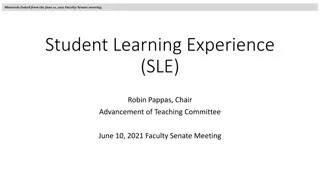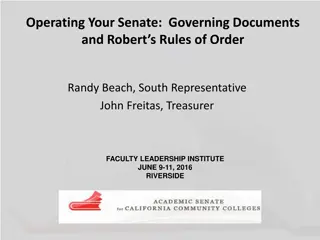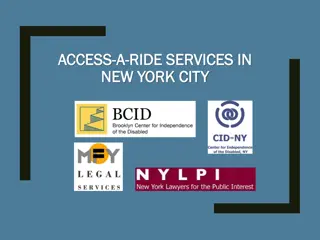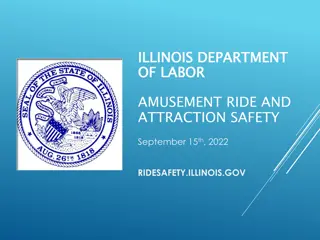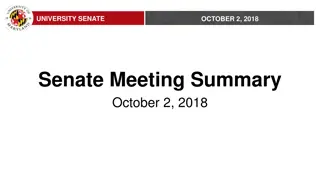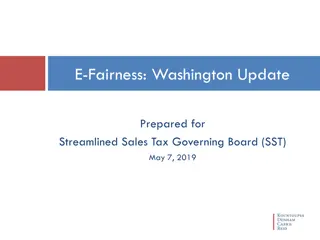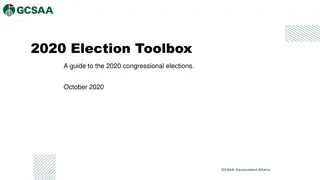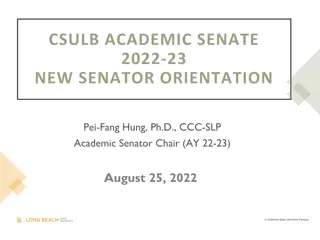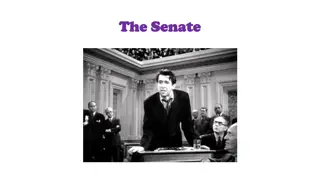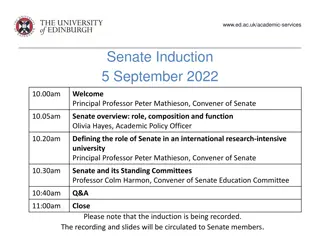RIDE Presentation to Senate Finance
The Rhode Island Department of Education (RIDE) aims to lead and support education in the state through a unified, strategic direction. Their vision is to prepare students to think critically, collaborate, and lead fulfilling lives. Explore RIDE's equity goals, excellence in learning goals, and strategic priorities towards achieving these objectives.
Download Presentation

Please find below an Image/Link to download the presentation.
The content on the website is provided AS IS for your information and personal use only. It may not be sold, licensed, or shared on other websites without obtaining consent from the author.If you encounter any issues during the download, it is possible that the publisher has removed the file from their server.
You are allowed to download the files provided on this website for personal or commercial use, subject to the condition that they are used lawfully. All files are the property of their respective owners.
The content on the website is provided AS IS for your information and personal use only. It may not be sold, licensed, or shared on other websites without obtaining consent from the author.
E N D
Presentation Transcript
RIDE Presentation to Senate Finance October 6, 2021
Mission and Vision The RIDE mission articulates the shared purpose that guides our collective efforts, while the vision is the desired condition that orients and unifies that purpose towards a common destination. Mission Mission The mission of the Rhode Island Department of Education is threefold: 1. To lead and support districts, schools, and communities through a unified, strategic direction for education in the state. 2. To use policy, advocacy, and governance structures to create an environment that advances opportunities for all students. 3. To maintain collaboration and efficiency in the department that enables innovation, agility, and continuous learning. Vision Vision RIDE creates conditions for every Rhode Island student to think critically and collaboratively, and act as a creative, self-motivated, culturally, and globally competent learner. Rhode Island students are prepared to lead fulfilling and productive lives, succeed in academic and employment settings, and contribute meaningfully to society. 2
RIDEs Strategic Priorities RIDE s Strategic Plan establishes five key priorities. By focusing on these priorities, RIDE is making significant progress towards raising expectations and reimagining what s possible in education for students statewide. 3
Equity Goals Measurable Goals: Measurable Goals: 1 1 1. In June 2021, 100% of RIDE teams began using the Equity Decision Making Tool as a consistent, explicit step in teams' formal decision- making practices as measured by a staff survey and leader observations. Equity Equity 2 2 Excellence in Learning Excellence in Learning 2. By July 2025, all students in every LEA will achieve at least one year s worth of learning, annually, based on the Student Growth Index. 3 3 Engaged Communities Engaged Communities 3. By July 2025, the gap in the percent of inexperienced teachers and school leaders in high and low poverty schools will close. To achieve this goal, the share of inexperienced teachers in high-poverty schools will decrease from 21% to 12%. The share of inexperienced school leaders in high-poverty schools will decrease from 29% to 25%. 4 4 World Class Talent World Class Talent 5 5 Governance Structures Governance Structures 4
Excellence in Learning Goals Measurable Goals: Measurable Goals: 1 1 1. By July 2025, 75% of students will achieve proficiency in ELA, mathematics, and science, as measured by the RICAS, SAT, NGSA, and DLM alternative assessments, an increase of 35% in ELA, 45% in math, and 44% in science. Equity Equity 2 2 Excellence in Learning Excellence in Learning 2. By July 2025, the percent of students who are chronically absent will decrease by 11 percentage points, from 21% to 10%. 3 3 Engaged Communities Engaged Communities 3. By July 2025, the state 4-year graduation rate will increase by 11 percentage points, from 84% to 95%. 4 4 4. By July 2025, the percent of students who report a feeling of belonging in their school will increase from 68% to 90% in grades 3-5, and from 43% to 65% in grades 6-12. World Class Talent World Class Talent 5 5 Governance Structures Governance Structures 5. By July 2025, the percent of students who report they are interested in their classes will increase from 63% to 80% in grades 3-5, and from 33% to 60% in grades 6-12. 5
Engaged Communities Goals 1 1 Equity Equity Measurable Goals: Measurable Goals: 2 2 1. In July 2021, RIDE set and is monitoring progress towards an ambitious goal for the use of stakeholder feedback in RIDE decisions to be achieved by July 2025. Excellence in Learning Excellence in Learning 3 3 Engaged Communities Engaged Communities 2. By July 2025, the percent of families who report a favorable opinion of their child s school culture and instructional decisions will increase from 69% to 80%. 4 4 World Class Talent World Class Talent 3. By July 2025, the percent of families who report they are meaningfully engaged in their child s learning will increase from 69% to 80%. 5 5 Governance Structures Governance Structures 6
World Class Talent Goals 1 1 Measurable Goals: Measurable Goals: Equity Equity 1. In July 2021, RIDE set and is monitoring progress towards an ambitious recruitment and retention rate for teachers of color across the state to be achieved by July 2025. 2 2 Excellence in Learning Excellence in Learning 2. By July 2025, the percent of educators who report they have engaged in professional development opportunities that are valuable and relevant will increase. This growth will be reflected in a 45% to 80% increase for teachers, a 47% to 80% increase for support professionals, and a 67% to 80% increase for school leaders. 3 3 Engaged Communities Engaged Communities 4 4 World Class Talent World Class Talent 3. By July 2025, the percent of students who report that the teachers in their building are supportive and effective will increase from 80% to 90% in grades 3-5 and from 60% to 70% in grades 6-12. 5 5 Governance Structures Governance Structures 7
Governance Structures Goals 1 1 Equity Equity Measurable Goals: Measurable Goals: 2 2 Excellence in Learning Excellence in Learning 1. In July 2021, RIDE set and is monitoring progress towards a goal for the percentage of LEA leaders that believe RIDE is timely and effective in its responsiveness, to be achieved by July 2025. 3 3 Engaged Communities Engaged Communities 2. By July 2025, the percent of school leaders who report that they have the autonomy and information to make key decisions around scheduling, resource allocation, and hiring and assigning staff will increase from 75% to 85%. 4 4 World Class Talent World Class Talent 3. By July 2025, the percent of families that report they are involved in key school improvement decisions will increase from 41% to 50%. 5 5 Governance Structures Governance Structures 8
Summary of COVID-19 Response & Relief Major Funds Amount to be Amount to be Distributed to LEAs Distributed to LEAs Description Description Award Amount Award Amount Program End Date Program End Date Coronavirus Relief Funds $90.0M $90.0M 12/30/21 ESSER I $46.3M $45.2M 9/30/22 ESSER II ESSER III $184.8M $166.3M 9/30/23 $415.0M $373.5M 9/30/24 ARP IDEA/Homeless $12.5M $12.5M 9/30/24 9
COVID-19 State Set-Aside Funds CARES Act, ESSER I includes $4.4M for State Level Support which has all been expended and obligated. CRRSA Act, ESSER II includes $17.6M for State Level Support. $10.7M of initiatives have been approved by the budget office. ARP Act, ESSER III includes $61.3M for State Level Support. $12.0M of initiatives have been approved by the budget office. GEERS I & II includes $2M. for Pre-K Expansion, $1M. in 2022 and $1M. in 2023. 10
Process Flow for Pandemic Compliance Review As we respond to this COVID-19 moment in a collaborative and intergovernmental way, RIDE continues to work with the Department of Administration s (DOA) Pandemic Recovery Office, to move this critical work forward. RIDE submits an Agency Initiative Form to DOA's Pandemic Recovery Office DOA If approved, RIDE works with DOA to secure line sequences and account codes Pandemic Recovery Office undertakes Compliance Review RIDE receives federal grant dollars from the USDOE via G5 RIDE works to identify,align, and plan a portfolio of initiatives based on data and need DOA RIDE is informed that the initiative is approved, needs revisions, or was rejected Now, work of the initiative can begin! Pandemic Recovery Office undertakes Governance Review 11
LEAP Task Force Priorities The LEAP Task Force believes the following absolute priorities will accelerate student learning and move our PK- 12 system forward. This work must elevate and center the needs of Rhode Island students who are multilingual, differently-abled, and who live in theurban core, through an explicitly anti-racist,equity-focusedlens. 1. Energize our school communities students and educators by launching a back-to-school campaign and statewide toolkit, with attention to students who are chronically absent and opportunity youth*. 2. Ensure all students have access to high-quality and personalized support from adults, both during the school day and through extended learning, partnerships for before/after school, or summer learning opportunities. 3. Universally screen all students and align resources to need. 4. Improve and support student transitions, across grades and systems. 5. Close the digital divide. *Opportunity youth is an asset-based term for young people between the ages of 16 to 24 years old who are disconnected and neither enrolled in school nor participating in the labor market. There are currently 4.6M opportunity youth, or about 1:9 members of this age group. 12
Planning Together + Sharing Transparently All CARES Act funds including ESSER II and ESSER III are under tremendous scrutiny. As such, transparency, accountability, and diligence are being stressed at all levels of government.RIDE is responsible for providing guidance as well as ensuring financial and academic accountabilityon the use of the funds. ESSER II and ESSER III funds must be budgeted, reported, and tracked separately from ESSER I funds. Each of the five LEAP Absolute Priorities has its own UCOA code. Within each LEAP priority are subaccounts for areas of specific emphasis, e.g., Summer Programs or Accelerated Learning. Additionally, in some cases, there are encouraged budget targets within these emphasized initiatives. 25% of total for Summer Programs and 50% of total for Accelerated Learning. A warning message (requires explanation; does not deny submission) will be generated if the targets are not achieved. LEAs were required to post a Back-to-School plan, as part of ESSER III requirements. In accordance with the USDOE, 30% of every LEA s ESSER III allocation will be withheld until each LEA s midyear report is complete. RIDE is working with Brown University's Annenberg Institute to understand LEA planning and spending patterns or trends, as well as planning to implement a Point-Of-Contact structure for each LEA to support planning and technical assistance. 13
Initiative Highlights The following initiatives highlight evidence-based activities that will help accelerate student learning here in the Ocean State in alignment with the RIDE Strategic Plan and the LEAP Task Force Report final outcomes. LEAP District Support Program Directly support districts in need through a grant-matching program to build sustainable improvement capacity and make core investments in areas like high-quality curriculum. High-Quality Mathematics Professional Learning Equity gaps widened, especially in mathematics, during COVID-19. Funds will provide professional learning for district cohorts at both the K-5 and 6-8 levels, all aligned to high-quality curriculum. PreK to K Student Transition Supports Invest in summer ramp-up programs to help prepare students to be kindergarten ready. RI has seen a 40% decline in Headstart and CCAP programs during COVID-19. Back to School Campaign Engage and reenergize students, families, and teachers to ensure a strong start to the 2021-22 school year, including the development of an innovative family-facing application. Interim Assessments Continue best-practice of mathematics, ELA, and science statewide interim assessments to help us consistently evaluate student performance at the state, district, school, and student levels, over the next two years. Summer Learning Continue nation-leading best practice of offering statewide summer-learning opportunities via EnrollRI for Summer 2021, 2022, and 2023. 14




